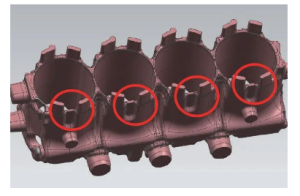Types of Material Options
The Custom Metal Prototypes Fabrication materials chosen, amongst other factors, play a key role in deciding the prototype properties — strength, weight, and heat resistance being some of them. The type of material chosen for making a prototype will not only affect the way the prototype works, but also determine how the prototype is made — what sort of technique is used and how much it will cost.
Types of Popular Metals and Their Properties
Aluminum – With its lightweight yet corrosion-resistant nature, aluminum is high up on the list when it comes to prototypes that need a strong strength to weight ratio. Its machinability is excellent, and it is commonly used in the aerospace, automotive, and consumer electronics. Aluminum is commonly found in the form of alloys like 6061 and 7075, that possess good mechanical properties and weldability.
Stainless Steel: This material is known for its excellent tensile and corrosion resistance, repeatedly making it the most valuable. This is a popular material for medical devices and food processing equipment, since it is able to endure the extreme conditions. The most common alloys are 304 and 316, providing various degrees of corrosion resistance and strength.
Titanium — this metal is world renowned for being light-weight, extremely strong, and highly resistant to corrosion. It is commonly employed in aerospace and medical applications due to its high strength and durability. While there are benefits to the use of titanium, it is more difficult to machine and is more expensive than other metals, and this can affect its application in prototyping.
Copper: Copper is another metal being a great conductor of electricity, and it is used often in prototypes especially when electrical components, such as connectors, motor parts or heat sinks. This makes it very versatile and since it is so soft it is great for making intricate custom pieces.
Gage SteelGage Steel: Producing form independent, high durability componentsTool SteelTool Steel: Used for high durability components It is typically used for constructing molds, dies and cutting equipment. Steel proves to be useful in high-wear applications where it is hardened and wear resistant.

Use Of Advanced Materials And Technology
Nickel Alloys: Because of their high level of strength and corrosion, they are vital for applications in harsh environments. Inconel and other nickel alloys are well-known for their high-temperature and corrosion resistance, which makes them a perfect material for prototyping components in aerospace and the energy sector.
Magnesium: Magnesium is the lightest structural metal (metal used to support heavy loads) that is being used in engineering applications today. It is 35% lighter than aluminum and could find use in products where weight is important such as portable electronics and automotive parts.
Tricks to Operate With a variety of Metals
The fabrication of these materials also need to be catered for in fabrication techniques. For example, metals such as Aluminum and Stainless steel are best suited to CNC machining due to its attention to detail. On the flip side, additive manufacturing (i.e. metal 3D printing) is the use of the course for more complex geometries or where traditional subtractive manufacturing- methods of taking large bulk materials and removing most of them- would be wastefully impractical.
Effective Material Strategy for COGS & Quality
Choosing the Right Material is a Fine Line Between Performance Needs and Price Constraints The type of project may require a different metal or alloy, based on whether or not the prototype will see actual use and for how long, the stress conditions, as well as the budget. While titanium offers excellent performance, its cost may not make it worthwhile in some projects when other, less expensive materials like aluminum can do the job.
Despite the apparent simplicity of the two main processes in metallurgy, the actual properties and applications of the multiple metals and alloys make ideal technological functioning within preferred criteria of prototypes hard to achieve. Over time, improvements in technology and expansion in the availability of native materials has enabled wider range of prospects in their usage and consumption for the development and production of such custom metal prototypes, which in turn is providing a more diverse array of answers to try and meet the constantly shifting needs present in virtually every industry throughout the world today.